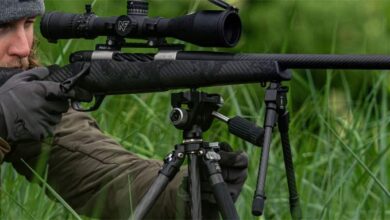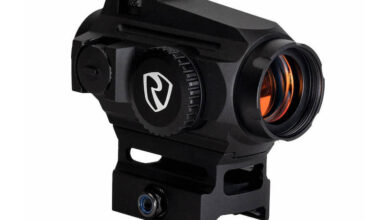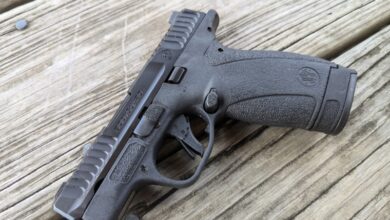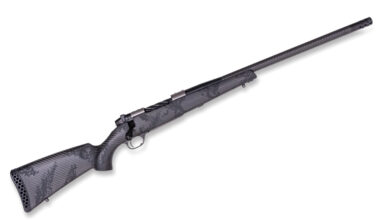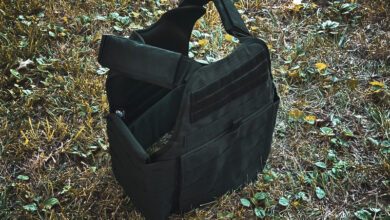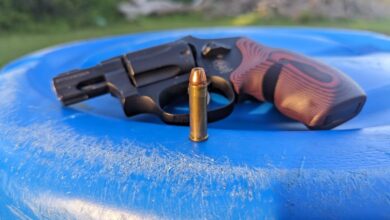Revolvers And Self-Defense: Still Viable?
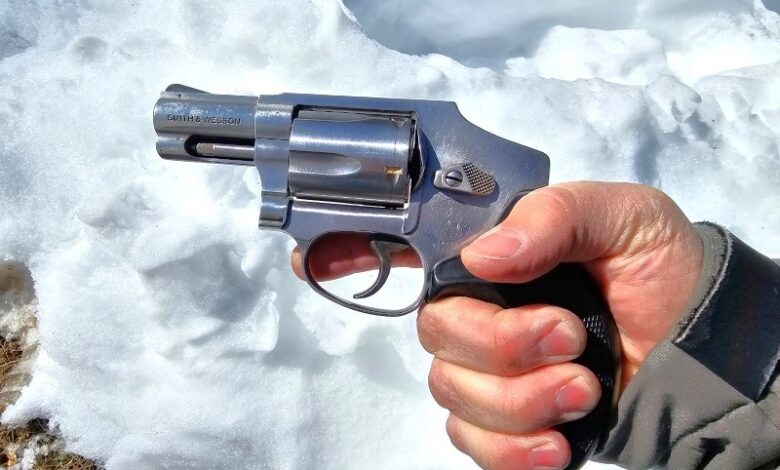
Why in the world would anyone choose to carry revolvers in this day and age of wonderfully efficient, small pistols? A person would be crazy to carry such a platform with limited ammo capacity. Plus, the revolver is so much slower to reload. It would seem that the death toll of the revolver has certainly sounded.
Or has it?
Proponents
There are some big names who were proponents of the snubbed revolver. Among them was the famous Colonel Rex Applegate, who applauded the release of the Smith & Wesson Chief’s Special. He even talked Smith & Wesson into chambering their Centennial in .38 Special.
Another huge proponent was Bill Jordan, of US Border Patrol fame. He didn’t hide his enthusiasm about small, lightweight snubbies such as Smith & Wesson’s Airweight, Chief Special, and Colt’s Agent for plain clothes police work. During hot weather, Jordan loved the snubby, saying, “That’s the time when the little Airweight model, slipped into a trouser pocket, is worth its weight in gold. And for such use, the smallest and lightest available, provided it has reasonable power, is best.”
And it’s not just these guys; tens of thousands of other law enforcement types (not to mention private citizens) have also used the revolver for decades upon decades. Both for on-duty and off-duty, along with undercover work.
A lot of what we’ll refer to in this article is snub-nosed revolvers for police work or personal protection. However, there are some other uses we’ll cover as well.
Revolver Attributes
Let’s take a look at some of the positives associated with revolvers. The first rule is to always have a gun, and snubbies are small and lightweight enough that we can always have a gun on us.
Reliability is a major asset with revolvers. Generally speaking, they are among the most reliable handguns out there. There’s no magazine to malfunction or lose. The rounds just sit there in the cylinder, ready to go at any time.
This is not to say that revolvers are foolproof or never have problems; there are a multitude of mechanical disasters that can befall the old wheel gun, such as going out of timing. Faulty ammunition (primers that aren’t fully seated) can jam up the cylinder, as well. Other maladies can occur, too; however, by and large, revolvers are very solid performers.
As far as concealability is concerned, there are some small revolvers that are amazing these days. The materials used can make them unbelievably lightweight and small.
The Downside
The lighter the revolver, the more unpleasant it can be to shoot. Some titanium and scandium models are incredibly lightweight, which really transfers the recoil directly to the shooter’s hand. When +P or even Magnum rounds are being used, this issue is exacerbated.
Reloading is slower when compared to auto pistols. Obviously, speed loaders make the process faster, though they can be inconvenient when carried as spare ammo in the pockets. Others sometimes use speed strips, which carry flatter but aren’t as fast into action as speed loaders.
Another downside that most people are quick to point out is the limited ammunition capacity of revolvers. Granted, they are correct. For full-sized revolvers, six rounds is the most common capacity, with most snubbies only holding five rounds.
But is this limited capacity really as bad as it sounds? Does it remove the revolver from realistically being enough gun?
Realistic Defensive Encounters
The NYPD conducted a lengthy study, which they called SOP 9. It examined over 6,000 police-involved shootings, with the data being released in 1981. I know what some people are thinking – that was decades ago; it doesn’t apply to modern times!
Well, you’d be largely mistaken. Times have changed, I’ll grant you. But, the manner of street combat hasn’t. Yes, auto pistols hold a lot more rounds these days, so bad guys often spray more rounds during their attacks. But people still try to kill each other in pretty much the same manner; human nature remains relatively consistent. Some of the weapons have changed, but the way people use them is largely the same. What are some of the things that the study found?
In 90% of the shootings, the distance was under 15 feet. The hit rate of police during this time was 11%.
- 34% of the shootings occurred from a contact distance of three feet.
- 47% occurred from three feet to six feet.
- 9% took place from 6-15 feet.
Yes, sometimes shootings take place at extended ranges, though statistics prove that nine out of ten times, it’s under five yards. To be clear, those statistics have remained fairly consistent over the years.
Most of the incidents happened during dim light (not total darkness). In 70% of cases, officers reported that they did not use the sights on the revolver.
Double-action shots were used in 90% of the shootings and almost exclusively during short-range encounters.
The average number of rounds fired was between two and three. This was corroborated by an L.A.P.D. study that found the average to be 2.6 rounds per encounter. Interestingly, the necessity for reloading was not needed in any of the cases to prevent death or injury.
Only 6% of cases involved reloading. These were instances of pursuit, barricaded persons, or prolonged action where the distance exceeded 25 feet.
Fast-forward to 1992, when the police hit potential rate was 17%. That’s right, just 17% of the rounds fired found their mark, with most shots being within six feet! That should be something that we ponder.
Given all of this information, it brings into focus just how relevant the six-shooter (or five-shooter) actually is. In most cases, we’re not going to need a ton of firepower. Especially as private citizens defending ourselves, where we’re not as likely to engage in running firefights with bad guys.
As we can see, the 3-3-3 rule applies, which dictates that the vast majority of shootings contain these elements:
- Taking place at 3 yards or less.
- Expending 3 rounds or less.
- Happening in the time span of 3 seconds or less.
Does a snub-nosed revolver shine in scenarios such as these? You betcha! And the great defensive minds of our age realize this.
Concealability
Many revolvers that are in circulation today have no exposed, external hammer, which makes them perfect for concealed carry. They’re virtually snag-free when withdrawn from a pants or coat pocket. Simply draw the revolver and begin firing.
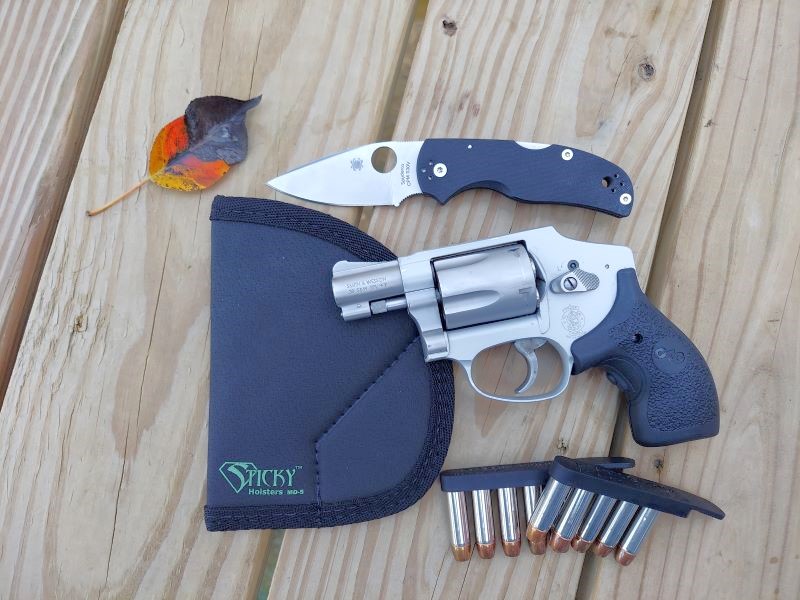
If carried inside a coat or jacket pocket, the revolver doesn’t need to be drawn; it can be fired from inside the pocket. If things turn sour, the weapon can be fired from inside concealment, assuming there’s no hammer to snag inside the pocket.
Professionally Carried
I had a post-retirement job delivering beer to establishments all around my state. Some of the deliveries took me to locations in extremely sketchy areas, which were not ideal for going in unarmed.
I expressed this concern to the company’s owner and requested to carry my own personal protection, to which he readily (and surprisingly) agreed. My little S&W 642 Airweight .38 Special revolver accompanied me everywhere. Tucked into my waistband in a DeSantis IWB holster, not one person in our company, save for the owner, ever knew that I was armed. That little revolver is so concealable and light, it’s unbelievable! It offered so much peace of mind everywhere I traveled. The fact that I’d put tens of thousands of rounds of .38 Special down-range in my career also helped my confidence quite a bit. I carried two Bianchi speed strips of ammo with me, giving me 15 rounds of ammo on tap.
My intent with that revolver was not to engage in a running gun battle with anyone; rather, it was to allow me to break contact with hostiles and get the hell out of Dodge if it came to it. It was a simple task, and that revolver was exactly what I needed and wanted.
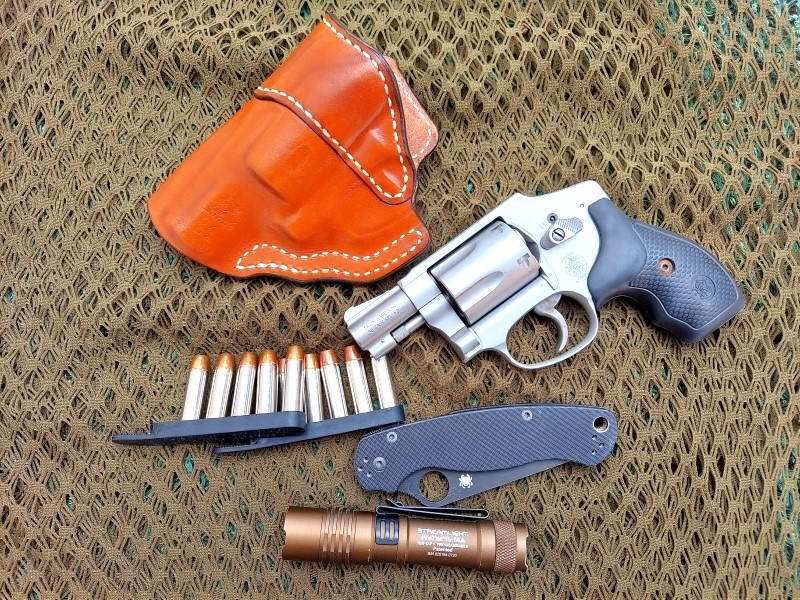
Other Considerations
For simplicity and ease of deployment, it doesn’t get easier than a revolver. There are no external safeties, so it’s a “pull and shoot” proposition. Another thing to consider is that if the defender is at contact distance (common in gunfights), struggling with the attacker, the revolver can be jammed into the attacker, and it will still fire. With no slide to block, the gun can’t be taken out of battery, leaving it inoperable.
Because revolvers typically have a heavy double-action trigger pull, it’s highly unlikely that an unintentional discharge will occur. If you’ll be carrying a revolver in a trouser pocket, I recommend using a pocket holster, both for safety so nothing snags in the trigger guard and to break up the revolver’s outline for reduced printing.
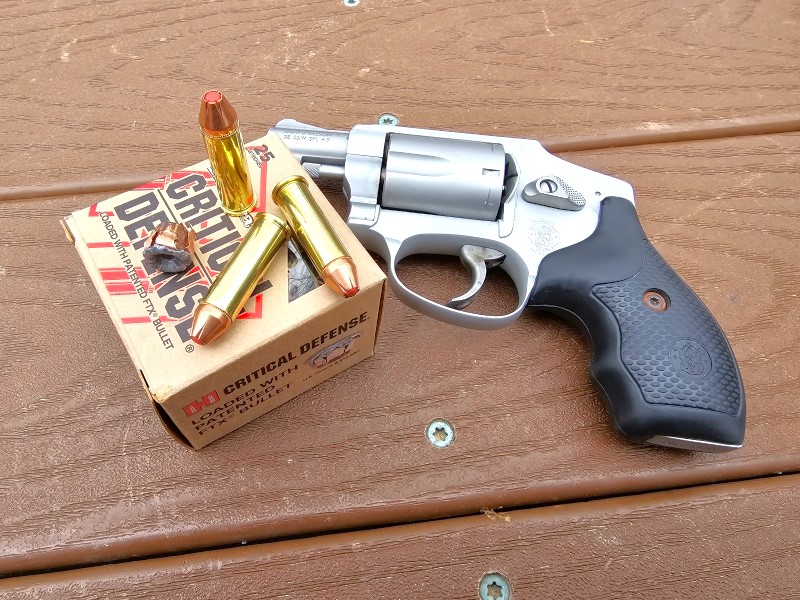
As far as ammunition is concerned, the revolver is not ammo-sensitive in that it can fire everything from snake shot to Magnum loads. Want to use low-powered wadcutters for some sedated target shooting? No problem, it won’t cause a stoppage. There’s no recoil system or slide that has to be worked like on an auto pistol, which has to be fed a steady diet of full-power loads. No, the revolver will eat anything that will fit into its cylinder.
Power Factor
There are times when we take a revolver along with us to defend against something more than just hostile humans. Perhaps you’re hiking or fishing in bear country or mountain lion territory. In such circumstances, a small auto pistol wouldn’t be the optimal choice to bring along in case of an encounter when something large and heavy is trying to eat us.

A revolver chambered in a serious cartridge such as .357 Magnum or .44 Magnum would, however, be just what the doctor ordered. Most auto pistols simply won’t match this level of power. Naturally, these revolvers could also double as defensive arms against those humanoids who wish to harm us.
Historical Attraction
Beyond all the practical reasons as to why revolvers make sense in some cases, there are times when I just enjoy carrying the old wheel gun. When I began working for my agency in 1990, we were issued revolvers. Throughout the years, I became extremely proficient in their use, which made me comfortable using them. When I retired in 2019, my agency was still issuing revolvers to officers! I know that it’s unthinkable that a law enforcement agency still exclusively issues revolvers to its troops, but it’s the truth. Granted, it’s one of the only agencies that still does so in the US.
Many of my friends still own and carry wheel guns. I don’t carry one very often, but I will occasionally. Sometimes, nostalgia is enough to nudge us toward the old wheel gun.
Parting Shots
Yes, their capacity is low when compared to most auto pistols, and they’re typically slower to reload. The design dates back well over a hundred years.
They are stellar for concealment, though, especially in their snub-nosed configuration, which is light and small. Ease of operation and reliability are their other hallmarks.
I know more than one cop who still carries a revolver as a backup piece for the very reasons listed here. A number of my friends still utilize them daily for defensive reasons and their main carry weapon.
Is the revolver dead? You can bet your life that it is not!
The post Revolvers And Self-Defense: Still Viable? appeared first on The Mag Life.
Read the full article here

